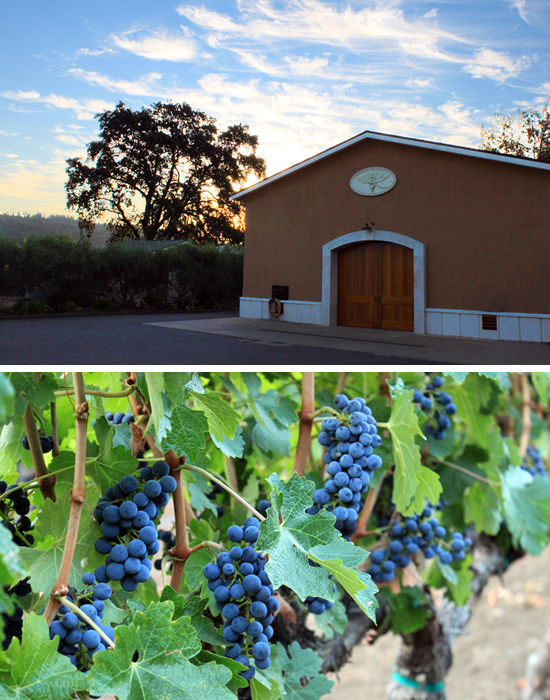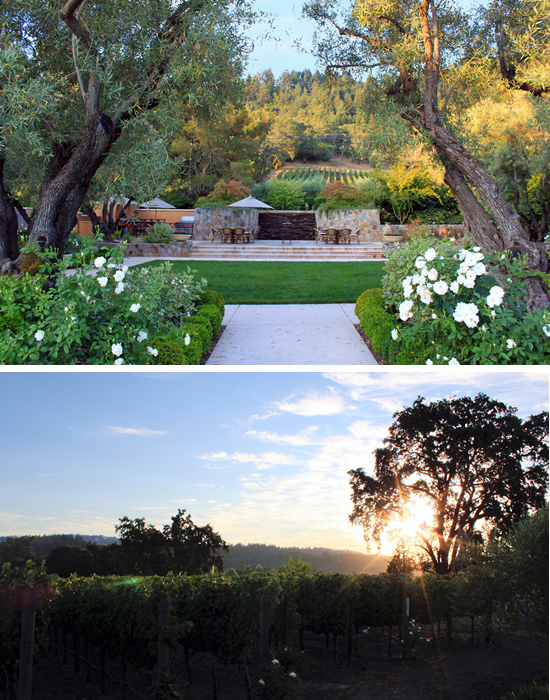Earthly Delights in Oregon
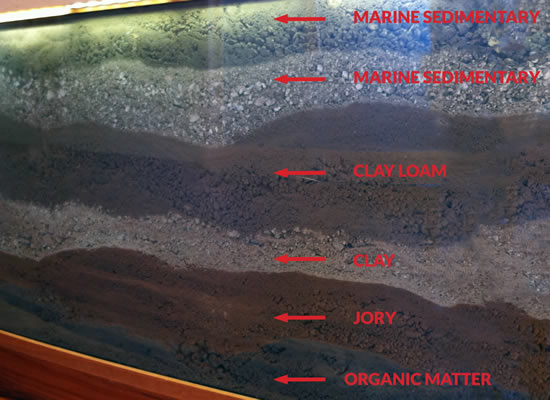
The new 20 foot long tasting bar with a layered soil display running its entire length is an incredible introduction to Alexana Winery’s 80-acre property. Vineyard Manager, Evan Bellingar, a soil aficionado and grape-growing master, spent the morning educating the Alexana team about the vineyard practices. Here’s what we learned:
Located in the Dundee Hills appellation of Oregon’s Willamette Valley, this appellation is marked by a number of unique geographic elements that make it unlike any other grape growing site in the world. Located between 360 and 640 feet above sea level, the site has eighteen soil types spread over a combination of rolling hills, steep slopes and rugged terrain. Evan took five of these very distinctive soil types to use for the Tasting Room display: Marine Sedimentary, Clay Loam, Clay, Jory and Organic Matter. Pinot Noir is very expressive of terroir and, as a result of the differing soil types in the vineyard, the Alexana Pinot Noirs are complex, mysterious and seductive.
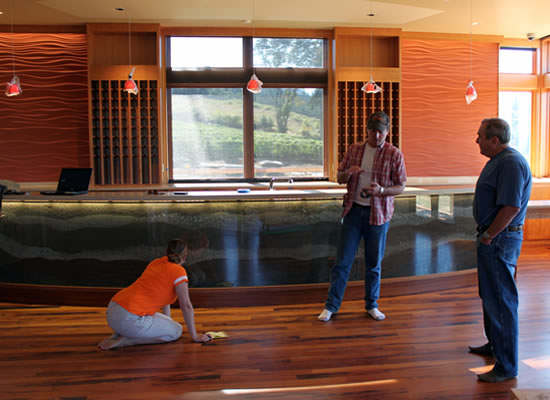
Using the Alexana Winery’s LIVE (Low Input Viticulture and Enology) standards of sustainable viticulture, the vineyards are dry farmed meaning that no irrigation is used. Grapevines that are dry farmed develop deeper roots, have a slightly different cell structure and can produce better, more complex fruit and, therefore, better wines. The roots are forced to burrow deep into the earth for nourishment, allowing them to pick up intriguing minerality in the process. In the end, the wines are more distinctive and more representative of their respective terroir.
In the winter, Evan plants cover crops such as Vech, Legumes and Clover to deliver nutrients to the grapevines. Cover crops draw any abundant moisture from the soil and help to reduce the vigor of the vines. Evan and his crew also use Vertical Shoot Positioning (VSP), a training system used in conjunction with Guyot that encourages better airflow through the vine. All of the shoots are trained to grow vertically and the increased airflow helps to prevent problems associated with disease, allowing the fruit to dry out quickly after rains (particularly appropriate in Oregon’s wet winters). VSP also exposes the grapes to the sun earlier in the season, encouraging them to ripen more evenly within the bunch.

The vineyards are hand-farmed, a laborious process ideal for the delicate-skinned Pinot Noir grapes where mechanized farming would be too aggressive. The vines are meticulously pruned, trimmed, thinned and picked by hand to emphasis the quality of the fruit. In the end, the grapes and the wines that they produce are a perfect blend of science, passion and artistry. Raise a glass and enjoy!
Kate Moss Has Nothing On These Vines
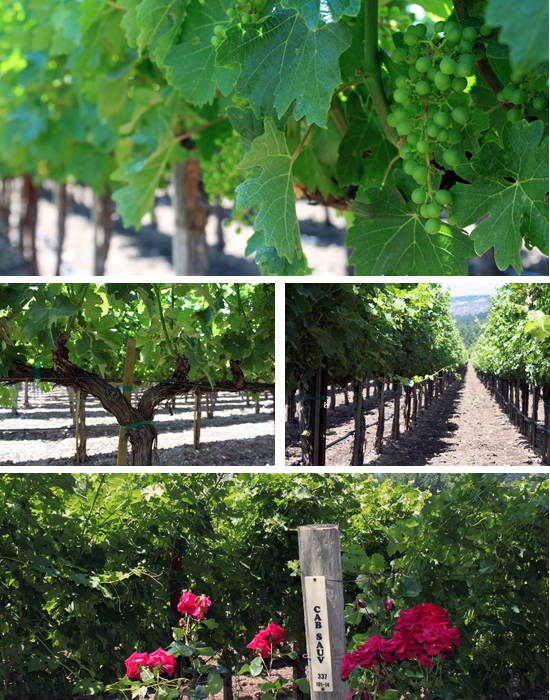
Taking a walk through the Revana Family Vineyard this morning with Matt from Barbour Vineyard Management was eye opening. I wanted to know everything there was to know, and he delivered.
Planted in 1998, the Revana Family Vineyard is made up of nine separate vineyard blocks totaling approximately nine acres. Seven blocks are planted to Cabernet Sauvignon, one block is planted to Cabernet Franc and one block is planted to Petite Verdot. I now know the rootstock and clones for each of those blocks, but will spare you the details.
What I found really interesting was the fact that even on a vineyard of our size (i.e. small), there are two very distinct soil types. Heavy, well-draining clay soil comprises the northern end of the vineyard while rocky, alluvial soil makes up the southeastern blocks. Each of the nine separate vineyard blocks is farmed uniquely depending on the soil’s needs.
A set of controlled irrigation lines deliver water to separate areas of the vineyard, allowing us to regulate moisture content on a section by section basis. Not all of the blocks, or all of the vines within a block for that matter, need watering at the same time. Pressure bombs are used frequently to measure the plant moisture stress of the vine which indicates the vine’s need for more or less water. Too much water and the grapes have no flavor; too little water and the vine will wither and die.
The vineyard is located on the valley floor in the heart of St. Helena and, as Matt would say, “it’s the supermodel of vineyards.” The rows of vines are planted about 5 feet apart to allow the sun to perfectly penetrate the leaves, creating a subtly dappled effect on the soil below.
As young growths, new vines are trained on a bilateral cordon, which means that the vines have a shorter trunk and the permanent branches, or ‘cordons’, are trained on a wire on both sides of the vine, creating a “T” shape. In addition to keeping the vines from simply dangling on the ground, training the vine on a bi-lateral cordon increases the exposure to light, improves air movement through the leaf canopy and makes the growth easier to manage. Due to exacting farming such as canopy management, our vines have beautiful uniformity.
After Harvest in the fall, legumes and other nitrogen-fixing cover crops are planted to manage soil fertility while improving the sustainability of the vineyard. Because cover crops can increase frost hazard, in early spring we mow the plants before disking them into the soil to increase microbial activity.
As a result of all of these vineyard management practices, we have healthy, vigorous vines that yield world-class grapes. Move over Kate, there’s a new supermodel in town.



